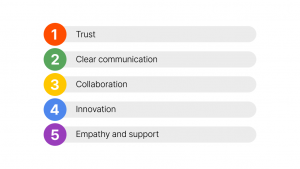Improving concentration and focus through behavioral, tool-based, and environmental methods.
Humans are naturally creative beings, striving to create and develop new ideas for the purpose of achieving their respective goals. Whether one is a scientist, artist, politician, or businessperson, the ability to express oneself through words is an immensely essential skill to possess. Writing is the most systematic method of establishing one’s ideas and organizing arguments into a comprehensive layout that is easily comprehensible by the intended audience. Yet good writing does not come easily – it needs practice and conscious development. Today, where there exists an abundance of quality information and data that is easily accessible, the core skill remains in the ability to communicate the rich ideas clearly.
“Successes are revised mistakes”
hypermoat
hypermoat
Unlike writing in the pre-internet era in which significant amount of time, effort, and resources were required to find the right information, writing in the information era is more about:
- Reducing noise: Finding and filtering the right, relevant information
- Synthesizing information: Aggregating information through discovering meaningful connections and distinctions between resources
- Continuous Development: Improving upon shorter feedback loops enabled by collaboration and sharing
Abundance of information and data is definitely a blessing, yet as mentioned in our whitepaper, the process of a) Reducing noise and b) Synthesizing information is becoming more difficult – the paradox of choice (Schwartz, 2004).
Through multiple iterations of practice, one becomes more fluent in terms of effectively communicating their ideas through writing.
‘You are what you pay attention to”
hypermoat
hypermoat
The importance of concentration and focus as a writer is apparent. Here are some useful methods of improving your concentration in both the short and long run.
Behavior Based Methods
Before we get started, I would like to recommend you to listen to Dr. Andrew Huberman’s organized session on ADHD & How Anyone Can Improve Their Focus. Dr. Huberman starts off by defining some of the key vocabulary (i.e. attention, impulsion, and hyperfocus) which are essential to understand the fundamentals of improving focus and concentration as a modern day thinker. All the interesting facts and studies aside (e.g. the biological basis of creating focus), Dr. Huberman introduces a method “to enhance your ability to focus in theory forever” in a single session. By carrying out a 17-minute interoception (a.k.a. meditation), one can significantly reduce the number of ‘attentional blinks’ in a near permanent way without any additional training.
Attentional blinks, by definition, is a “phenomenon that reflects temporal limitations in the ability to deploy visual attention” (Goldman & Davidson, 2017). As people age and their working memory and ability to focus get worse, the number of attentional blinks they carry out goes up. The practice of reducing the amount of visual information coming in helps you reduce the number of attentional blinks and hence improve general focus. This 17-minute session is not difficult to carry out – quietly sit somewhere comfortable and pay attention to your internal state, registering your breathing and senses.
Once your 17-minute session is over, now it’s time to get to work. There are two key elements that are crucial to take care of before and while you are writing: time and space. Starting off with time, I enjoy the habit of thinking in shorter time intervals (e.g. in batches of 15 minutes as opposed to 30 minutes, etc.). This way, I have much more control over these ‘mini-sprints’ that I allocate for maximum focus and for resting. Many people refer to this technique as the pomodoro timer technique – conventionally 25 minutes of distraction-less, highly focused session of work, followed by 5 minutes of break.
Tool Based Methods to Improve Focus
Once you get used to the behavioral methods of improving your focus as a writer, now you’re ready to multiply that level of concentration with relevant tools. Being overwhelmed with the amount of information being taken in during the research stage even before writing the actual document is a common situation knowledge writers experience. (Read more about this here) This leads to longer periods of time spent on preparing to write rather than writing itself. In fact, rather than unnecessary visual or cognitive disturbances caused by so many tabs and applications, the biggest burden on paperwork comes from psychological barriers. The amount of information accessible leads to difficulty filtering necessary information from unnecessary information, causing the user to think that everything is important. This leads the research to become an endless unproductive web surfing and despite spending hours on work, the actual document is left as a blank white paper with only a few sentences.
Typed is a digital workspace designed to ensure that users do not feel the need to leave their workspace. The process of finding, collecting, reading, analyzing resources, as well as locating documents or projects, and editing the documents, are actions that can be done within a single interface. It is immensely helpful for writers who want to maintain concentration, looking for a method to “search Less, write more”. Data and information collected within Typed can be viewed through a Split Viewer simultaneously while writing, without having to use a separate viewer application. Typed’s Split Viewer currently supports pdf, doc, ppt, and excel formats, as well as web URLs, and will continue to support more formats, including image files. The Split Viewer enables the user to make seamless transitions between resources, filter collected resources, and ultimately utilize the resources to produce high quality writing without having to leave the main workspace. Typed’s workspace with a split viewer interface is a simple, but effective approach that allows the knowledge worker to transition through numerous resources while staying fully focused on the current document’s context.
Creating Flow for Concentration
- Box Breathing
- When exhaling (out of breath) people go into fight or flight mode – learning to focus through the panic is how you achieve flow
- Creating Opportunities of Pattern recognition
- Reading nonfiction topics outside your core area of expertise
- This enables your brain to make connections and recognize patterns (interdisciplinary) – giving the basic necessities
- Reading nonfiction topics outside your core area of expertise
Conclusion
As a writer, the ability to maintain focus is the single most important skill to possess in order to generate new ideas and eventually synthesize them in a manner that is effective and organized. By establishing a general habit through behavioral methods of improving focus, you will not only enjoy the benefits of better writing but clear thinking. Reducing the number of attentional blinks and preventing cognitive decline by decreasing the amount of visual information intake will help you maintain clarity of thought and boosted levels of concentration. On top of that, consciously managing the time and space you use to write effectively will significantly increase the chances of pure concentration, which we call the state of flow. Finally, once you are prepared to take action, digital tools like Typed will enable you to amplify the focus and productivity that you’ve established as a writer. By reducing the inefficiency of context switching and enhancing the experience of information collection and application, you are now more than prepared to write your masterpiece.
Now go on, and write that masterpiece of yours.



